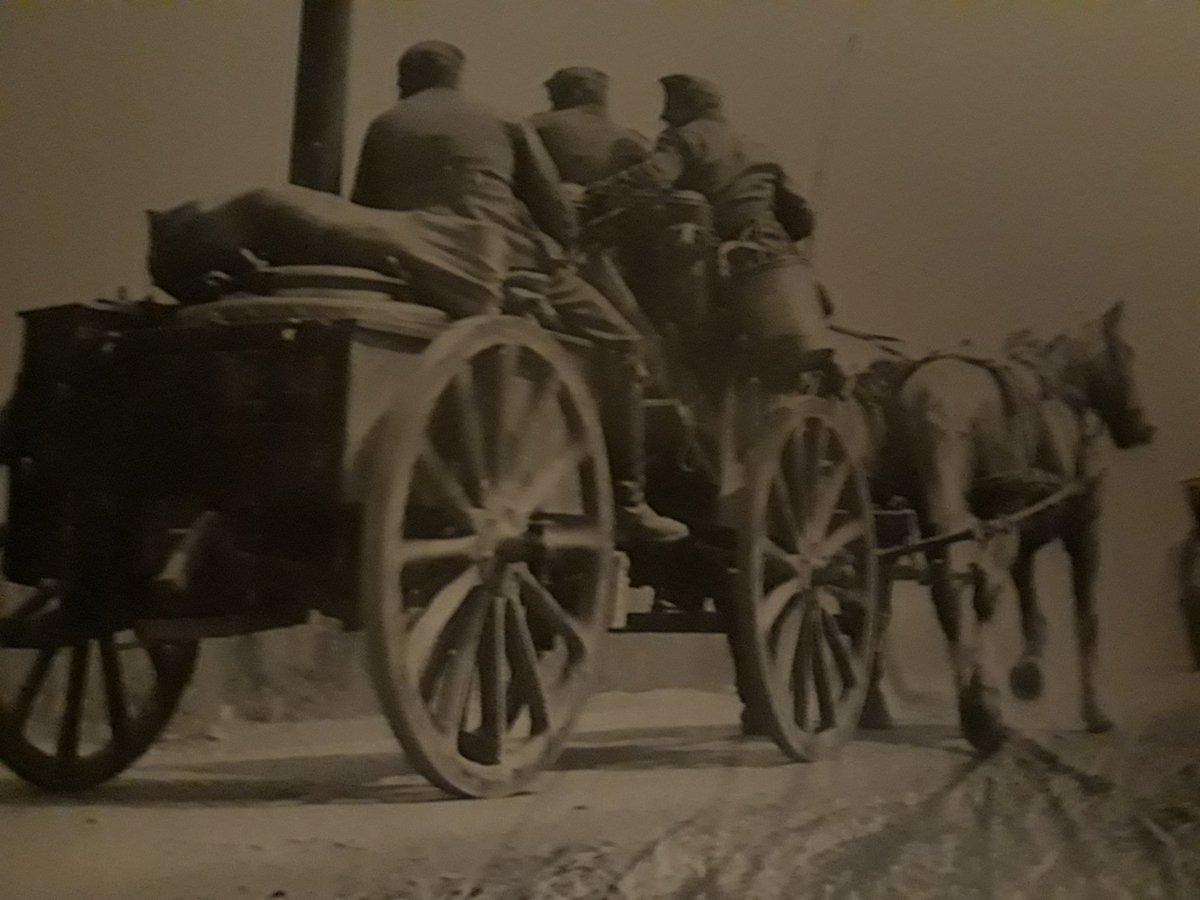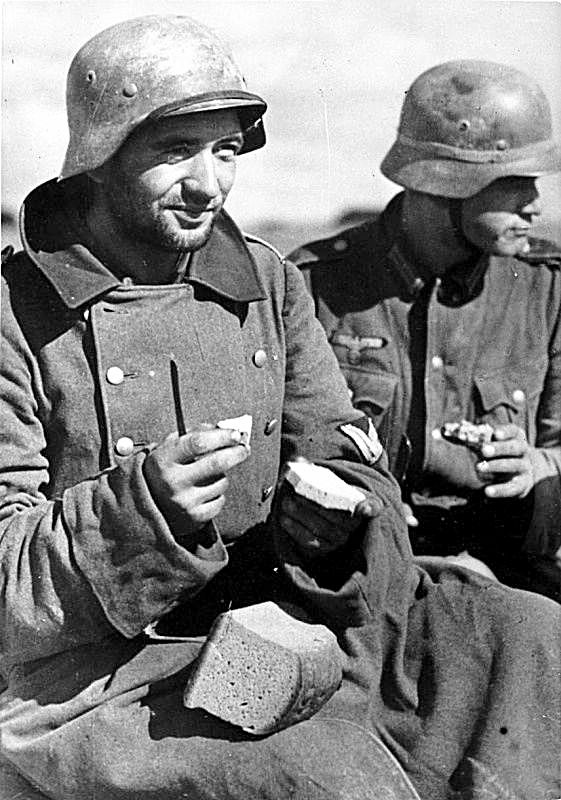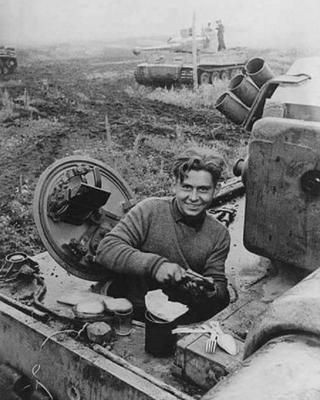
The Hf 11/13 and Hf 12/14 field kitchens were the workhorses of the German armed forces during world war two. The larger of the two models could feed up to 225 soldiers on a daily basis...and the smaller up to 125 soldiers per day. Both were engineered for maximum efficiency. 2 



The field kitchens would be transported to the various fronts a number of different ways. Initially a train would be required for most of the journey. From each staging point or supply depot the kitchens could be transported by vehicle or towed by horseback. 3 



Below we see a motorized field kitchen aboard a train car serving soldiers at a brief stop during its journey. It is important to remember that food could be cooked while the field kitchen was in transit. 4 

Most of the motorized kitchens and the field kitchens with pneumatic tires were allocated to fast moving formations such as armored divisions. For the most part field kitchens had wooden wheels and were towed by horseback. They would be set up as close to the front as possible. 5 



When drawn by horseback the kitchen was attached to a limber...or "Vorderwagen". In addition to the drivers seat, the limber also contained a storage area beneath the seat which could hold supplies and kitchen accessories. 6 



Here we see two men loading the limber with coffee and cans of "Fleischkonserve". I'll be discussing "Fleischkonserve" or "canned meat" on a future thread. 7 

The field kitchen itself was designed with storage and organization in mind. The main soup kettle consisted of two parts...an inner and outer container. Glycerin was poured in the space between the two containers to keep the kettle from overheating and scorching the food. 8 



Here we see three soldiers removing the kettle for routine maintenance. It was important to check for leaks in the main kettle to prevent glycerin from contaminating the food. 9 

At the beginning of the war the standard field kitchen included two fireboxes... one to heat coffee and one for the main soup kettle. In this picture you can see the two firebox doors and the coffee...or "Kaffe" spigot just above the coffee firebox door. 10 

The right side of the field kitchen was used to store multiple canisters of coffee, tea, salt, pepper, spices, and misc kitchen utensils. In 1943 a new model was designed that included a third firebox for roasting meats. The third firebox replaced existing storage areas. 11 

Storage canisters were designed to fit into storage perfectly with very little space left unused. Most were made of metal, but bakelite was used as metal became scarce late in the war. You can clearly see a metal container next to its bakelite counterpart below on the right. 12 



And lastly... the food for frontline troops had to be delivered since the field kitchen could only get so close. For this we have the "Speisenträger". This was a hot food container with backpack straps and ladle attached to the inside of the lid. 13 



This was a very dangerous job for the runner. Dodging sniper fire and sporadic artillery would be common while delivering food. Pictured below are four soldiers eating soup that has been delivered in a Speisentrager. 14 

I hope you've enjoyed my initial thread on German field kitchens. There will be several more threads to follow on:
Caloric intake and diet
Iron rations and specialty foods
Butcher and bakery units
Requisitioning
Supply depots and logistics
Late war food situation. 15/17
Caloric intake and diet
Iron rations and specialty foods
Butcher and bakery units
Requisitioning
Supply depots and logistics
Late war food situation. 15/17

Feel free to comment or correct any inaccuracies in my thread. I'm still learning and I welcome any new info or advice. This is a labor of love and I'm excited to see how everyone enjoys the threads!
Source:Gulaschkanone/Thompson
Source:SS Armor on the Eastern Front/Vuksic. 16
Source:Gulaschkanone/Thompson
Source:SS Armor on the Eastern Front/Vuksic. 16
Also...a very special thank you to @BuddNicholas Your support, knowledge, and encouragement have helped me immeasurably when it comes to researching my passion.
#WW2 #fieldkitchens #feldkuche #Germanfieldkitchens #gulaschkanone #feedingthetroops
End thread
#WW2 #fieldkitchens #feldkuche #Germanfieldkitchens #gulaschkanone #feedingthetroops
End thread
• • •
Missing some Tweet in this thread? You can try to
force a refresh








